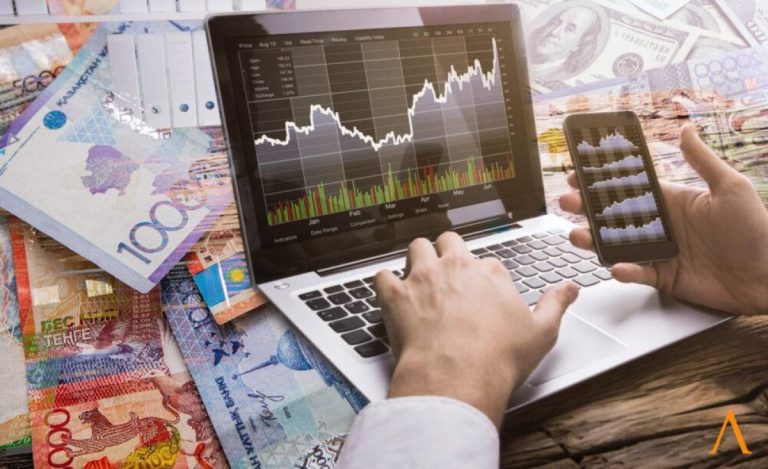Introduction to Bitcoin Mining
Bitcoin mining is a critical process within the Bitcoin network, encompassing a series of complex operations that facilitate transactions, secure the network, and maintain its decentralized nature. As cryptocurrencies continue to grow in popularity and acceptance, understanding Bitcoin mining becomes increasingly important for anyone interested in entering the cryptocurrency space. In this comprehensive guide, we will explore everything there is to know about Bitcoin mining, from its significance to the intricacies of the mining process itself.
What is Bitcoin Mining?
At its core, Bitcoin mining is the act of validating and adding transactions to the Bitcoin blockchain. Miners use powerful computers to solve intricate mathematical problems, which helps to confirm transactions. When a miner successfully solves a problem, they add a new block to the blockchain and receive a reward in the form of newly created bitcoins and transaction fees. This process plays a dual role: it not only creates new bitcoins but also ensures the integrity and security of the existing transactions.
Importance of Bitcoin Mining in Cryptocurrency
Bitcoin mining serves several vital functions within the cryptocurrency ecosystem:
- Transaction Validation: Every transaction made using Bitcoin is confirmed through mining, ensuring that funds are not double-spent.
- Network Security: The decentralized nature of mining helps secure the network against fraudulent activities, maintaining its integrity.
- Decentralization: Mining is spread across different participants globally, which protects the network from centralized control or manipulation.
- Creation of New Bitcoins: The process generates new bitcoins, which introduces currency into the ecosystem and controls inflation.
How Bitcoin Mining Works
The mining process primarily involves two main activities: solving cryptographic puzzles and verifying transactions. Here is a simplified breakdown of how it works:
- Transaction Collection: Miners collect unconfirmed transactions from the Bitcoin network.
- Block Formation: These transactions are grouped together into a block.
- Hashing: Miners must find a unique hash for the block. A hash is a fixed-length alphanumeric string generated from the block’s contents.
- Proof of Work: The process includes significant computational effort through trial and error until a valid hash (meeting specific criteria) is found.
- Adding to Blockchain: Once a miner finds a valid hash, they broadcast the block to the network for confirmation. Other miners validate the block, and if accepted, it is added to the blockchain.
Getting Started with Bitcoin Mining
If you are considering getting involved in Bitcoin mining, there are several key components to understand, starting with the necessary hardware and software.
Choosing the Right Hardware for Bitcoin Mining
The effectiveness of your mining operation largely depends on the hardware you choose. Here’s a breakdown of the types of hardware available:
- ASIC Miners: Application-Specific Integrated Circuits are tailored for Bitcoin mining, offering more power and efficiency compared to traditional GPUs or CPUs.
- GPUs: Graphics Processing Units are less efficient for Bitcoin mining but serve well for mining other cryptocurrencies.
- FPGAs: Field-Programmable Gate Arrays offer a middle ground; they are more efficient than GPUs but less so than ASICs.
When selecting hardware, consider factors such as hash rate, energy consumption, and initial costs. ASIC miners are generally the preferred choice for serious Bitcoin miners due to their high efficiency.
Setting Up a Bitcoin Mining Rig
Once you have decided on the hardware, setting up your mining rig includes the following key steps:
- Purchase Hardware: Acquire the necessary components: mining hardware, power supply, cooling systems, and motherboards.
- Assembly: Connect your hardware following the manufacturer’s guidelines. Proper cooling is crucial to prevent overheating.
- Install Software: Use mining software compatible with your hardware. Common options include CGMiner, BFGMiner, and EasyMiner.
- Join a Pool: Consider joining a mining pool to combine your computational power with others, increasing the chances of successfully mining blocks.
Understanding Bitcoin Mining Software
Mining software plays a critical role in connecting your hardware to the Bitcoin network. Here are the considerations for selecting the right mining software:
- Compatibility: Ensure that the software is compatible with your mining hardware.
- User Interface: Choose software that has an intuitive interface to simplify operations.
- Performance Tracking: Opt for software that allows you to monitor the performance of your mining rig in real time.
Types of Bitcoin Mining
There are various methods to mine Bitcoin, each with its associated benefits and challenges. Understanding these differences is crucial for selecting the right approach for your objectives.
Individual vs. Pool Mining
Individual mining refers to mining solo, where one miner solely depends on their own hardware and capabilities. While this offers the potential for higher rewards, the likelihood of success is considerably lower compared to pool mining. Pool mining involves joining a group of miners who share their processing power and collectively split the rewards based on their contributed computational resources. This method increases the chances of receiving regular payouts but results in smaller individual earnings compared to mining a block solo.
Cloud Mining Explained
Cloud mining allows individuals to lease mining power from a provider, eliminating the need to own and operate hardware. This method is appealing for newcomers who may lack technical expertise. However, it’s essential to conduct thorough research before choosing a cloud mining provider, as many operate with various reputational risks or hidden fees.
Bitcoin Mining Farms: What You Need to Know
Mining farms are specialized facilities dedicated to Bitcoin mining, housing numerous mining rigs for optimal efficiency. Here’s what to know about them:
- Economies of Scale: Mining farms can capitalize on bulk purchasing of hardware and energy contracts, significantly reducing operational costs.
- Location: The geographical location of the mining farm can greatly impact electricity costs, as areas with cooler climates are preferred to reduce cooling costs.
- Management: Farms require continuous maintenance and monitoring to ensure optimal performance and to address potential technical issues.
Challenges in Bitcoin Mining
While Bitcoin mining can be lucrative, it also presents several challenges that aspirant miners must navigate.
High Energy Consumption and Costs
One of the most significant challenges in Bitcoin mining is the high energy consumption associated with the mining process. Mining hardware is resource-intensive; therefore, miners must account for the costs of electricity when calculating profitability. To mitigate costs, many miners seek locations with lower electricity rates or invest in alternative energy sources.
Bitcoin Mining Regulations and Laws
Legal and regulatory frameworks surrounding Bitcoin mining vary by region. Some governments encourage cryptocurrency operations, while others impose restrictions or outright bans. It’s essential to stay informed about the regulations in your respective country or state, as this can significantly affect the feasibility and legality of your mining endeavors.
Security Risks in Bitcoin Mining
Mining operations face numerous security threats, including hacking attempts, malware, and vulnerabilities in mining software. To combat these risks, miners must engage in regular updates, utilize firewalls, and ensure the integrity of their network connections. Additionally, employing good cybersecurity practices such as strong passwords and multi-factor authentication can further safeguard operations.
Advanced Bitcoin Mining Strategies
To maximize profitability and efficiency, miners can implement several advanced strategies that take into account the evolving landscape of Bitcoin mining.
Optimizing Mining Efficiency
Mining efficiency can be optimized through several measures, including:
- Choose the Right ASIC: Different ASIC miners have varying efficiency ratings; selecting one with a low energy consumption relative to its hash rate can be beneficial.
- Regular Maintenance: Keeping mining rigs clean and addressing any obstructions can improve airflow and reduce overheating.
- Monitor Payouts: Keeping track of mining pool payouts ensures that you are receiving fair compensation for your contributions.
Future Trends in Bitcoin Mining
The landscape of Bitcoin mining is continuously evolving, with the following trends gaining traction:
- Emerging Technologies: Advancements in mining hardware and software can lead to improved efficiencies and lower environmental impact.
- Sustainable Practices: More miners are exploring ways to harness renewable energy sources to power mining operations, reducing their carbon footprint.
- Integration with the Financial System: Traditional financial institutions may start investing in or facilitating mining operations, bridging the gap between traditional finance and cryptocurrencies.
Analyzing Bitcoin Mining Profitability
Before investing in mining, it’s crucial to conduct a thorough analysis of profitability. Factors to consider include:
- Hash Rate: Understanding the hash rate of your mining rig will give insight into your potential earnings.
- Electricity Costs: Calculate your electricity costs accurately, as they directly impact your net profitability.
- Market Conditions: Bitcoin prices fluctuate; understanding market trends can help you time your mining engagements optimally.
















+ There are no comments
Add yours